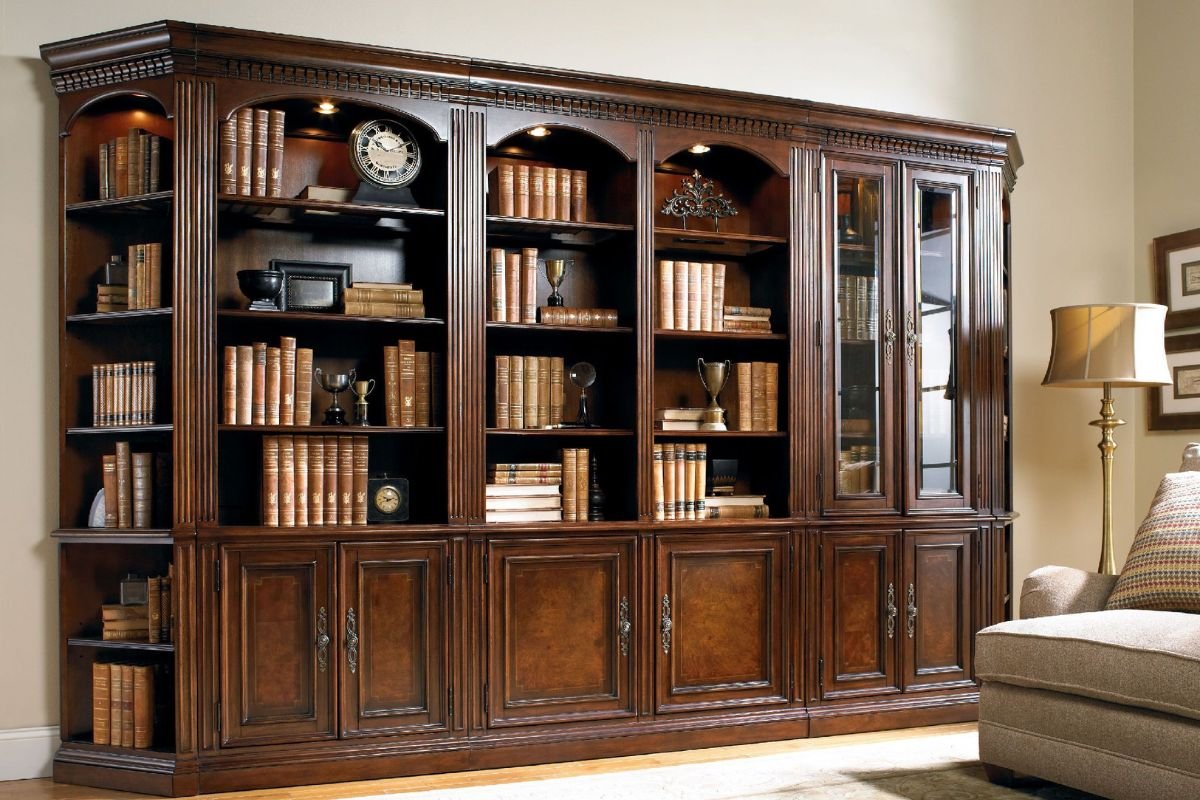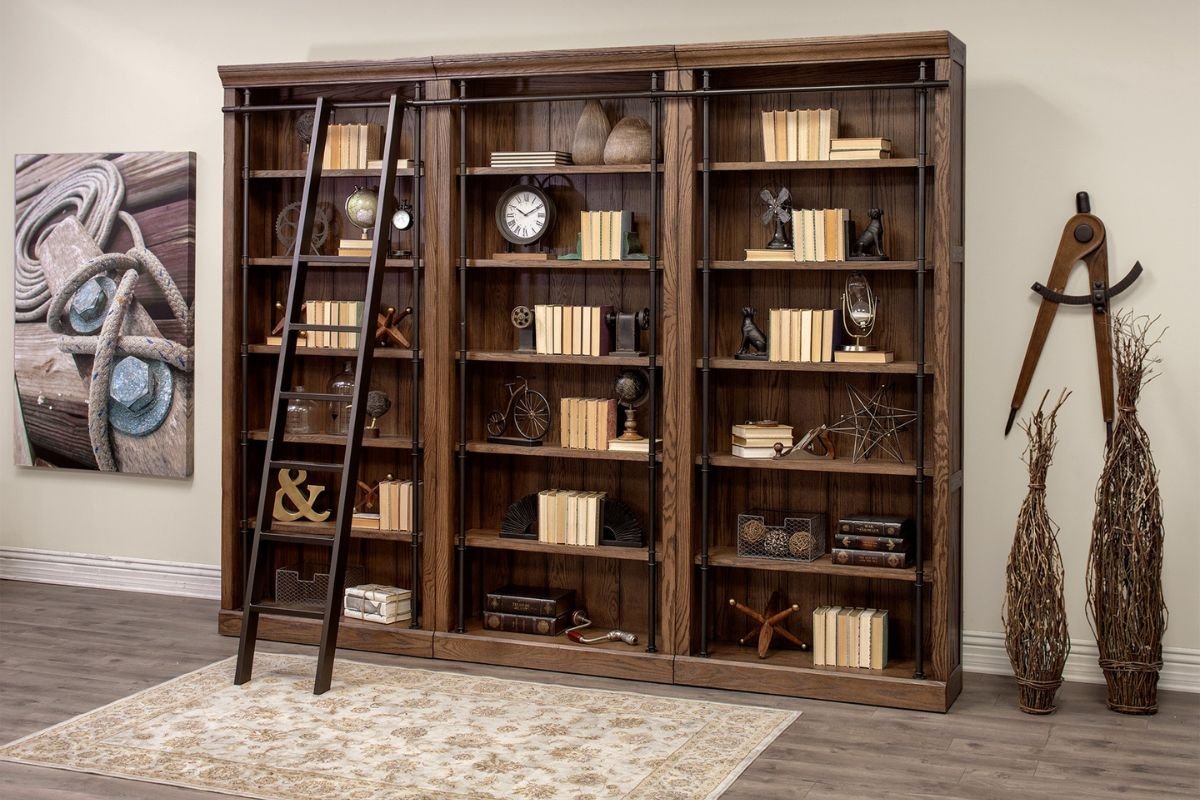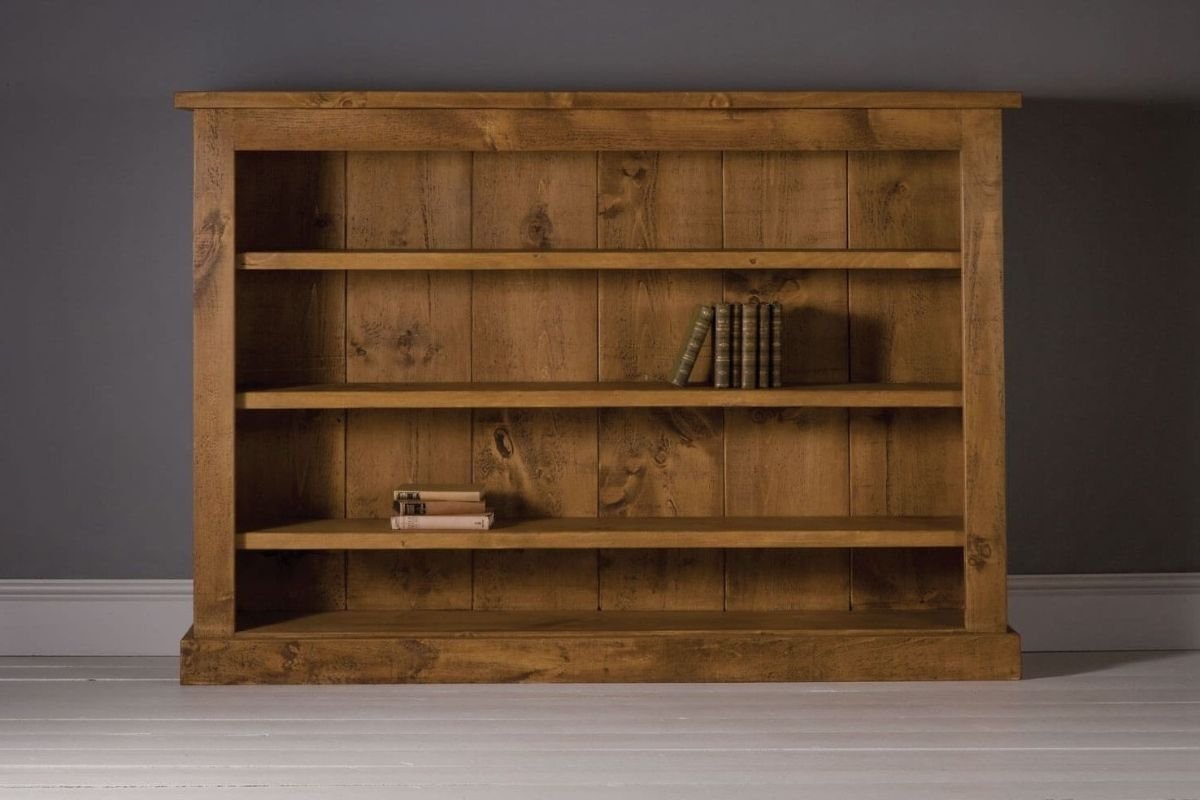
There are many questions to ask before buying a bookcase: How many shelves do you need? How much space do you have for bookcases? Do you prefer metal or wood? What will match your other furniture? What style do you like?
Do you want a ready-made bookcase or a custom piece? What is your price range? Do you have valuable books that need to be stored behind glass or will an open bookcase meet your needs?
Will your bookcase sit on the floor or hang on the wall? Will it last for years or will it be moved often?
What do you actually put on your bookshelf? Will you use it exclusively for books or to collect knick-knacks, craft supplies, sports equipment, trophies or something else?
Bookcases come in a variety of sizes. Bookcases can be found in almost any size, from small wall-hung shelving units to floor models weighing hundreds of pounds. Bookcases can have several shelves, reach from floor to ceiling, or cover an entire wall.
Before deciding on a bookcase, measure your room carefully, especially the ceiling height. You certainly don’t want to buy a bookcase that doesn’t fit your space. Before going to a store, write down the measurements. Be sure to include height, width and length.
When measuring, also note all plug-ins, light switches, heating vents and central heating controls. You need to make sure that these things will be accessible once your bookcase is in place.
Choosing a bookcase based on material
Today’s bookcases are usually made of wood or metal. Both are attractive, durable and suitable for standing a lot of weight.
Wooden bookcases are usually more traditional but can also be whimsical and trendy. They can be purchased at discount stores and second-hand shops, but search for brand new, well-made bookcases, furniture stores, and more high-end establishments.
Metal bookcases are also beautiful and affordable. They are not only functional, but can be found in many more styles than what was once offered. Metal bookcases with open scrollwork and durable finishes are very popular these days. Quality metal bookcases are nothing like the old styles our parents kept in their basements and garages, so don’t write them off as “cheap” or “ugly.”
Both wood and metal bookcases work in most home and office situations, but there are other choices. Wicker bookcases are a possibility although they are not as durable and cannot take as much weight as wood or metal. If you’re looking for something a little unusual and unique, bookcases made from other materials like clear acrylic, lucite, glass, and chrome are also options.
You can also choose a bookshelf made of cement blocks and rough wood, but do you really want that? Most adults should probably buy a quality piece that will last for decades.

What finish will match your decor?
Bookcases come in a variety of finishes that include everything from matte stains and glossy oils to veneers, varnishes and colored enamels. An office with a large walnut desk may look great with a matching wooden bookcase, or it may call for a more modern bookcase that brings contrast to the room. A beach house, decorated with neutral colors and light pastels, can look best with something open and airy.
Although wood is a traditional material, metal bookcases are often the preferred choice. They can be purchased in any color of the rainbow and can even come in finishes that mimic the look of real wood or even cement. Your choice will depend on existing decor, personal style, budget, and intended use.
Bookcases come in a variety of styles, including traditional, contemporary, and modern. Consider the following…
Jacobean, Pennsylvania Dutch, Louis XVI, Chippendale, Victorian, Art Deco, Scandinavian Contemporary, Spanish Mission, Mid-Century Modern, American Colonial, Rustic, Minimalist, Relaxed Modern, Shabby Chic, Industrial and Urban are just a few of the collectives. When it comes to choosing a style that suits your taste.
Best-selling styles include mid-century modern and Scandinavian contemporary, although shabby chic and urban collective are also high on the list. Mid-century modern has a sleek look that goes with other styles without clashing, while shabby chic usually comes with a distressed look that fits perfectly in a bohemian-style room.
Chippendale and Victorian styles bring warmth to a room while minimalist and industrial styles bring a cold, urban look. A rustic bookshelf might be perfect for a mountain cabin, but look no further than a New York penthouse.
There are other types of bookcases, such as leaning and hanging bookcases, that do not fit easily into any established category. Leaning bookcases that look like half of a step-ladder are very popular in the home accessories market today. Hanging units that attach to hooks in the ceiling are also an option. Such bookcases are very casual and go perfectly in any room where a large piece of furniture looks out of place. Lightweight shaving units are also easier to move and less expensive than large bookcases.
The style of bookcase you choose should complement the rest of the furniture in the room. You can easily change out pillows and wall-hangings, even rugs and chairs, but a bookcase, like any other heavy piece of furniture, is going to be around for a while.
Will a ready-made bookcase suffice or do you need a custom piece?
Readymade bookcases are suitable for most homes and offices. A ready-made bookcase is readily available and usually costs much less than custom-made or built-in pieces. Depending on the delivery time and some other factors, a ready-made bookcase can be set up in less than an hour.
Buying a ready-made bookcase or “kit” is much simpler and easier than hiring someone to build you a custom bookcase. Be sure to read the instruction booklet if your bookcase comes with one.
Of course, there are times when just a custom bookcase will do. If you have cathedral ceilings and want your bookcase to cover a twenty-foot wall, you’ll probably need to buy a custom-made piece.
If you want your bookcase to be permanently attached to the wall or to match other built-in cabinetry, you may want to go custom. If you’re building a home library, perhaps fulfilling a lifelong dream, then definitely go for custom-built-ins. Bookcases will add value to your home, provide years of enjoyment and look fantastic.

How much should I spend on a new bookcase?
With furniture, you really do get what you pay for in the long run. Bookcases range in price from less than a hundred dollars to thousands. Don’t take out high-interest loans, but buy the best bookcases you can afford.
Quality bookcases can be purchased for around $500, although many styles and sizes can be found for under $2,000. High-end bookcases can run $3000 or more, especially if made from rare woods like teak or chestnut. Also, pay more for bookcases with lots of hand-carving and other decorative elements like lights and fancy hardware. The price of your bookcase will ultimately depend on what you are comfortable paying.
Do you need a bookshelf with glass doors?
If you are a collector of rare books, you may want to consider the protection that glass doors offer. Perhaps a barrister bookcase will suit your needs better than an open shelving unit.
Bookcases with glass doors are suitable for keeping collections free from dust and smoke, but they must be opened occasionally to allow air circulation. If your home or office is located in a climate with high humidity, you should regularly check for mold and mildew.
The Barrister Bookcase is another specialized option that offers plenty of protection. Barrister bookcases have separate units that stack. Glass doors usually lift up from the closed position where books sit. With the modular design of most Barrister bookcases, you can stack them as high as you like, adding more units as your collection grows.
What is the difference between a bookcase and a shelving unit?
Bookcases are usually large pieces that sit on the floor. Shelving units are small and can be hung from the wall or ceiling.
Bookcases can usually hold much more than a single shelving unit and can support the weight of many heavy books. Shelving units, when attached to studs or wood, can still be strong, but be careful if your walls are plaster or sheetrock. You definitely don’t want your bookshelves to fall, possibly hitting the wall, shelf items, or someone’s head!
Will your bookcase need to be moved fairly often?
If you move around a lot, it’s best to stick with bookcases that can be easily carried by one or two people. You don’t want to buy a heavy bookcase if it’s a nightmare to move across town or country. If moving is in your immediate future, you should opt for a lightweight bookcase.
Also Read: How to choose a dining table: a buying guide
If you have your mind set on a larger, heavier unit, it may be wise to wait until you’re settled into your new place before making a purchase. You’ll be glad you did.
What is the intended use for your bookcase?
If you want to display a few nice books alongside some trophies, framed pictures or other decorative items, a small bookcase will do just fine. There are many small shelving units and bookcases available to choose from, so keep looking until you find the perfect one.
If you have a lot of books, a large bookcase is the best solution. Most books, such as paperbacks, hardcopies, and even antique books, will be safe in an open bookcase as long as the room has a lot of smoke and dust. If you collect rare books, signed books, or books with leather covers, you may want to invest in a bookcase with doors or a barrister bookcase.
Maybe you’re buying a bookcase to store supplies or emergency food items. In this case, a metal shelf may be more appropriate than a large wooden bookcase.
